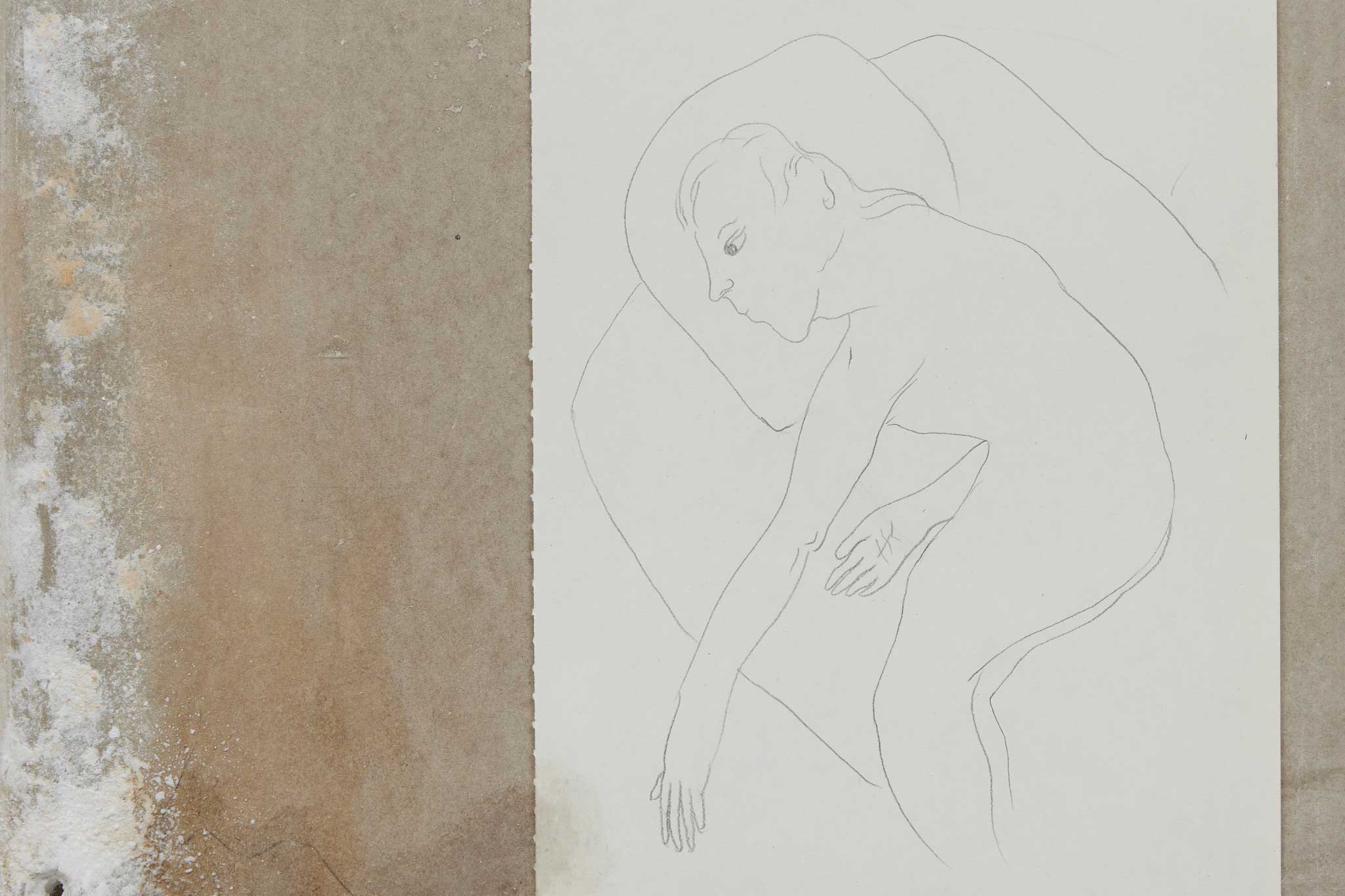


Courtesy of the artist, LC Queisser, Tbilisi, and Emalin, London. Photo by Stephen James.
Emalin, The Clerk’s House, 118 ½ Shoreditch High Street
13 January – 16 March 2024
Emalin gallery announced its arrival in its new space with a group show of fifteen artists, some from their regular programme and others specially invited. The 18th century Clerk’s House sits alongside the churchyard of St Leonards, Shoreditch, corralling a pocket of the East End that resists the ever-encroaching glass and steel towers that creep out from the City. For close to three hundred years this modest building has quietly stood witness to the life of this most turbulent district and now, with its sloping floors and narrow staircases, it offers a space that gently vibrates with its accumulated history.
Entering through the side door – the front door is a later addition, dating to when the building was used as a shop – the first works you encounter are Adriano Costa’s five bronze casts, hung high on the wall. Costa’s sculpture and installation typically deny any hierarchy of materials, even rejecting the term ‘found objects’ though this is what he most often uses. Here, in a neatly reflexive move, he has taken discarded moulds, picked up in a foundry, and cast them in bronze. The perverse process of creating casts of the moulds themselves renders it is impossible to identify the object the moulds might originally have been made to produce. The titles of each - The Flute, Cemetery series, The Pipe, Cemetery series, for example – do little to elucidate and even misdirect the viewer, as does the luxurious gleam of the bronze.
In the main ground floor space, looking out to Shoreditch High Street, two works by Matias Faldbakken hang side by side. POE, 2023 spells the American author’s name at an angle across the paper, using a font reminiscent of Ed Ruscha, but adding a third horizontal to the E that introduces the sense of the uncanny, if Poe’s name alone were not enough. The second piece, ABSTRACT IS NOT AN EIGHT LETTER WORD, 2023, is an elegant series of curlicues in charcoal that almost resolve into an object, but in the end defy identification.
In the centre of the room, Ceidra Moon Murphy’s Qualified Immunity, 2024, is a phalanx of police riot shields, their scuffed and scratched surfaces echoing with violence. The title references the legal protection that police officers used to have, which provides that the “police owes no duty of care to members of the public in relation to action taken in the course of suppressing crime.” (This legal principle was overturned in the UK in 2018 but is still in operation in the US.) The artist is fascinated by the chillingly euphemistic terminology used in the law and in the equipment used to enforce it: the riot shields, officially ‘Personal Protection Shields’, are branded Civil Defence Supply on the back.
In a clever switch of scale and tone, Karol Palczak’s little painting Corn in the Pantry, 2023 is a glowing still life of an ostensibly wholesome, rural subject. Palczak lives and works in Krzywcza on the southeastern edge of Poland, close to the border with Ukraine. It is a remote area marked by successive wars that redrew the border over and again, sparsely populated and economically deprived. Tied with string and hung up to dry, the golden yellow of corn is painted in dramatic contrast to the shadow and dark timbers of the pantry. With extreme economy ,the painting expresses an architecture and a way of life that are entirely alien to us as urban dwellers. But Palczak disallows any reading as some kind of timeless idyll by introducing a single, industrially produced tile into the background: blue flowers on a white ground that may be a cheap modern rendering of traditional folk decoration, it insinuates uncomfortable ideas of nationalism. Emalin gave Palczak his first exhibition outside of Poland last year.
Upstairs, Maria Xenofontos’ Landing, 2023 is a child’s cardboard play castle, folded flat and coated thickly in grainy sulphur. It is visibly and viscerally toxic in ways that trigger some non-rational instinct for self-preservation. Selecting Xenofontos for the Camden Art Centre Emerging Artist Prize at Frieze in 2022, Martin Clark singled out the qualities of ‘elegance and strangeness’ that attracted his jury to her work. Those qualities are powerfully at play in the concision of the work here. In Nicholas Cheveldave’s work Caring is Sharing, 2022, the artist has collaged together images of ‘plague stones’ from across the UK. Relics from the plagues of the medieval period, these stones persist on the boundaries of towns and villages. They were used to make it possible for people to buy goods without fear of contagion, leaving coins in hollows in the stone filled with vinegar, which they believed would disinfect them. There is obviously a resonance with our recent experience of pandemic, but the work also conjures the commerce and exchange that characterise human habitation. In the 18th and 19th century London was famous as a cacophonously noisy city, and particularly the district of Shoreditch, that was alive with the sounds of street sellers, industry, traffic of carriages and crime.
These are only a few highlights of a richly layered show where the artists have clearly enjoyed bringing work to such a charismatic space. Maybe it was arriving through the relentless rain and the gathering dusk of a February evening that had prepared me, perhaps it is something to do with the domestic scale of the house that focusses attention in a particular way. Whatever, it felt like the perfect show to see this week.
Caroline Douglas
Director
Emalin
The Clerk’s House, 118 ½ Shoreditch High Street
Opening Times: Wednesday – Saturday, 11am – 6pm
Exhibition open until 16 March 2024